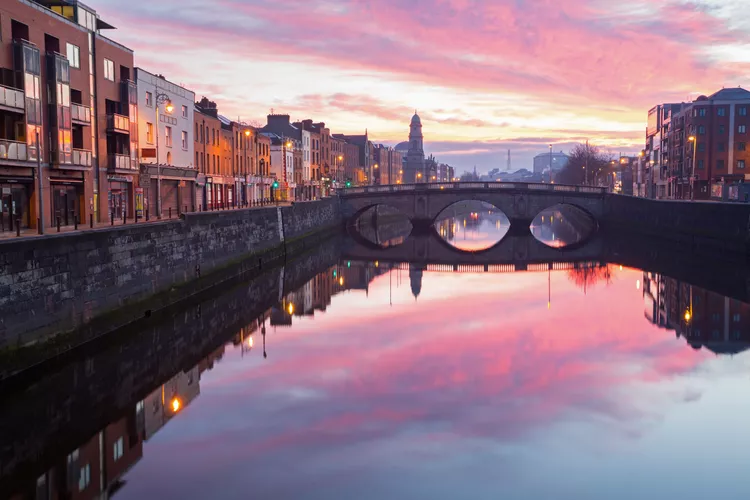Summary
An opportunity to visit Dublin should not be missed. Many factors go into building an itinerary, such as the timing of a visit, available accommodations, quality of attractions, and climate. Dublin serves as the entry point for many of Ireland’s visitors, offering a major airport and the best selection of accommodations in the country. However, a Dublin visit can be expensive. Learn some strategies for budget travel in this vibrant capital city and throughout Ireland.
Ireland is largely a rural nation, made up of smaller cities and villages that entice visitors with old-world charm. Dublin rules as the dominant city of the nation, both in terms of population, amenities, and transportation options. Nevertheless, this Irish metropolis is not without its own allure, and it’s easy to spend days exploring its museums, castles, and churches. Budget travelers should plan carefully, as hotel stays and meals here can become more costly than anticipated.
When to Visit
Summers tend to be mild in Ireland; however, the trade-off is that crowds peak with the temperatures. If you’ll be visiting between June and August, it makes sense to consider reservations for tours and accommodations.
Spring and fall are usually comfortable periods, offering cool nights and pleasant daytime temperatures. Winter represents the lowest point in the tourism season, but prices for some services often decrease due to lower demand, making a wintertime visit appealing for travelers on tight budgets. If you decide on a winter visit, ensure that the attractions you wish to see are open, as some will close for refurbishing during slower times.
Where to Stay
Dublin provides an excellent selection of rental homes for short stays, along with a wide variety of hotel and bed-and-breakfast options. However, be certain that your chosen location aligns with your sightseeing plans, as sometimes a low-priced B&B may be too far from the main attractions to be practical. A search for chain hotel options in Dublin will reveal numerous choices, but prices may be steep. Alternatively, Dublin hostels offer some excellent alternatives, although it’s wise to verify the primary focus of a hostel operation before finalizing your stay.
How to Get Around
Dublin stands out as the transportation hub of Ireland, connecting air travel to major European and North American cities. Ferries also transport travelers to the United Kingdom and various regions of Ireland. Moreover, Dublin serves as the hub for the national rail service known as Irish Rail or Iarnród Éireann.
Bus travel in Dublin is economical; however, it requires some patience and plenty of pocket change. LUAS is a tram system operating on two lines (red and green), where one-way fares start at about €2, with off-peak fares even lower. There is no direct rail service to the airport, but Dublin Bus provides cost-effective transport between the airport and central city for approximately €7 ($7.85 USD) one-way and €12 for a round-trip ticket ($13.45 USD).
If your time in Dublin is limited, consider the costs of bus travel versus the time you’ll spend. In some cases, using a cab or ride-share service like Uber may be more budget-friendly.
See The Book of Kells for Less
At Trinity College, a major tourist attraction, you’ll find the Book of Kells displayed. This masterfully illustrated version of the Gospels in the New Testament is behind glass, allowing visitors to view only two pages. Nevertheless, people line up to witness a truly impressive work of art.
Instead of paying solely to see the Book of Kells, consider opting for a larger tour that includes the site. A Trinity College Tour, as part of a walking tour of Dublin, offers a view of the Book of Kells in addition to the impressive college library. Be aware that these tours tend to fill up rapidly during the summer months.
The National Gallery Is Free
A prime free attraction in Dublin is the National Gallery, housing a diverse array of art, including priceless works from renowned artists like Rembrandt, Monet, and Goya. Additionally, free lectures and tours are available, so check the museum schedule for offerings during your visit. The museum is conveniently located on Kildare Street near Merrion Square.
Take Advantage of a Free Walking Tour
High-quality guided walking tours can be fairly expensive; however, many find this investment worthwhile, especially after the cost of traveling to Dublin. Budget-conscious travelers often seek out quality tours that are free of charge.
The Dublin Free Walking Tour company offers five such tours, with groups forming daily at 11 a.m. and 3 p.m. at the Spire on O’Connell St. Although the tour itself is free, the guides work on tips, so feel free to reward them as your budget allows for a job well done.
Consider a Dublin Pass
The Dublin Pass for one day starts around $55 USD for adults, with a two-day pass approximately $78. Three and five-day passes are also available. The Dublin Pass provides free admission to more than 30 of the city’s top attractions, and it includes free transportation via a hop-on, hop-off bus that connects to the Dublin Airport. Additionally, the pass offers discounts at local stores. However, it’s crucial to assess whether the discounts truly represent value for your itinerary.
Avoid Temple Bar
Many guidebooks recommend Temple Bar as a “must” experience while in Dublin. The area was once run-down but has undergone revitalization, now featuring small bars, restaurants, hostels, art galleries, and entertainment venues. During the day, it is relatively calm, yet the nightlife transforms the atmosphere. Be cautious of pickpockets during busy hours, as they often target this area.




